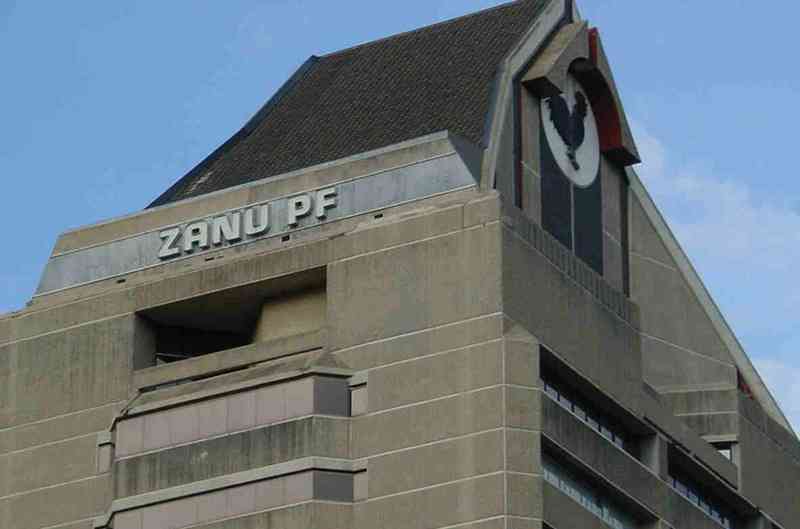
ZIMBABWE'S gross domestic product (GDP) plunged to US$35 billion in November, reflecting the impact of a severe drought, rapid currency devaluation, and global commodities market instability.
The grim data, released this week, signals deeper economic shocks ahead, economists warn.
Speaking at this year’s Independence Day celebrations at Murambinda Growth Point, in Buhera, Manicaland province, President Emmerson Mnangagwa said GDP had surged 194% to US$47 billion from 2018 figures.
“Our country’s GDP is now exceeding US$47 billion, up from US$16 billion in 2018,” Mnangagwa said.
However, the Zimbabwe Public Debt Management Office reported recently that GDP had contracted to US$35 billion, wiping out US$12 billion in just seven months.
This represents a 25% decline between April 18, when Mnangagwa delivered his speech, and November 28, when the 2025 National Budget was presented.
The budget itself was a fire-fighting blueprint, with Finance, Economic Development and Investment Promotion minister Mthuli Ncube unveiling plans to raid the pockets of those still affording fast foods, among several new tax heads.
The downturn aligns with a 40% slump in Zimbabwe Gold (ZiG) since its market debut on April 5, exacerbated by currency devaluation and bearish sentiment dominating the equities market throughout the third quarter.
- Experts downbeat as Ncube cuts GDP forecasts
- NoViolet Bulawayo’s new novel is an instant Zimbabwean classic
- New perspectives: De-link politics from Zim’s education policies
- COP27: Zimbabwe’s opportunity to shine
Keep Reading
Despite this bleak backdrop, Ncube forecast GDP to rebound to US$38,2 billion in 2025, driven by increased private consumption.
“In 2025, private consumption is projected to drive economic growth by 6,6% due to strong recovery in household spending, while the public sector is anticipated to register a growth of 5,3%,” he said.
Ncube did not explain the scale of GDP write-downs.
Leading economists told the Zimbabwe Independent deeper cuts to GDP were rarely surprising.
The economists expressed scepticism about these projections, citing policy inconsistencies, dwindling consumer purchasing power, and one of the most severe droughts in recent history.
Economists’ gloomy views mostly emanated from problems related to ZiG, despite assurances by the Reserve Bank of Zimbabwe (RBZ) that it was backed by buffers of gold worth hundreds of millions of dollars.
ZiG has relapsed during its eight months tenure, crashing by more than 40%.
“The exchange rate had a major impact there,” Trust Chikohora, former president of Comesa Business Council, told the Independent.
“There was a huge devaluation from about US$1:ZiG14 to around US$1:ZiG25, and to almost US$1:ZiG30 now.”
“There will be other factors, including the impact of the El Niño phenomenon. The 2025 growth projection presupposes that we will have a good agricultural season.
“We will see how the rains come, but I also think it is rather optimistic,” he further stated.
In his November budget statement, Ncube revised 2023 GDP growth down to 2%, from an initial target of 5%, while projecting a recovery to 6% in 2025.
Economists have dismissed these figures as overly optimistic.
The GDP data emerged as business activity and consumer spending fell in the wake of a trail of bankruptcies and capital flight.
The last time GDP stalled at breakneck speed was during the decade to 2008, when the economy contracted by 50%.
“This highlights the irregularity in the growth projections,” Chenayimoyo Mutambasere, an economist at the Centre for Economic Justice, said.
“Initially, a 5% growth target was estimated, but this was later revised down to 2%, indicating unrealistic and overly ambitious budget targets.
"This impact is not limited to lost output but is further exacerbated by a 200% increase in maize imports.
“This decline in investment limits the potential for future productivity improvements, creating a cyclical challenge,” she added.
Stevenson Dhlamini, an economics lecturer at the National University of Science and Technology, said a tougher than expected drought was among factors pushing back Zimbabwe’s GDP.
“Our GDP has shrunk from US$47 billion in April to US$35 billion primarily due to the adverse impact of climate change, which saw the country experiencing one of the worst droughts,” he said.
“This was exacerbated by the shock experienced in the platinum group of minerals,” Dhlamini added.
The cascading setbacks cast doubt on the growth measures outlined in the 2025 National Budget, threatening to derail recovery efforts and deepen Zimbabwe’s economic woes.










